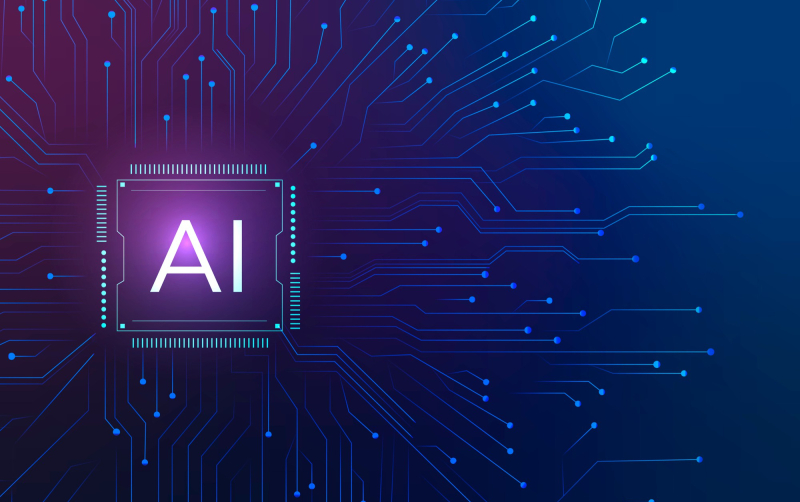AI Development Trends That Will Define 2024

1. Generative AI’s Expanding Horizons
Generative AI platforms like ChatGPT and DALL·E are transcending their creative niches, venturing into specialized, industry-tailored applications.
Notable Use Cases:
- Healthcare: Automating medical documentation, deciphering complex patient data, and simulating synthetic datasets for groundbreaking research.
- Marketing and Design: Revolutionizing advertising through dynamic copy creation and interactive content generation.
- Education: Personalized tutoring systems sculpting bespoke learning experiences.
Why It’s Transformative: By streamlining workflows and amplifying ingenuity, generative AI empowers businesses to operate with unmatched efficiency and innovation.
2. The Ascendancy of Multimodal AI
Multimodal systems, which proficiently interpret and generate diverse data forms—text, images, audio, and video—are advancing at breakneck speed.
Key Developments:
- Models like GPT-4 and DeepMind’s Gemini amalgamate various data types for profound contextual acuity.
- Real-time applications include video captioning, image-to-text translation, and the creation of immersive multimedia interactions.
Significance: Multimodal AI enriches user engagement, offering intuitive, multifaceted digital experiences while unraveling intricate real-world contexts.
3. AI as a Steward for Sustainability
With rising ecological concerns, sustainability is carving out its place as a cornerstone of AI development.
Key Innovations:
- Energy-efficient AI models and hardware engineered for minimal environmental impact.
- Adoption of decentralized learning methodologies like federated learning to curtail centralized data processing.
- AI-driven tools for climate modeling and precise carbon footprint monitoring.
Impact: By addressing environmental crises while minimizing its own footprint, AI is becoming a powerful ally in global sustainability efforts.
4. Hyper-Personalization at Scale
AI’s ability to offer ultra-customized experiences is reshaping consumer interactions across industries.
Key Domains:
- E-commerce: Tailored product suggestions and fluid pricing mechanisms.
- Streaming Services: Hyper-relevant content curation based on user preferences.
- Healthcare: Individualized treatment pathways and real-time health analytics.
Why It’s Game-Changing: This level of personalization fosters deeper connections, enhancing user satisfaction and brand loyalty.
5. Governance in the AI Age
As AI technology proliferates, regulatory frameworks are becoming indispensable.
Emerging Trends:
- The EU AI Act introduces a risk-based classification for AI applications, setting stringent benchmarks.
- Internal ethical policies within companies are gaining prominence to promote accountability.
- Tools that enhance AI explainability help organizations align with regulatory demands.
Why It Matters: Regulatory measures instill public trust, prevent misuse, and ensure the responsible evolution of AI systems.
6. Proliferation of Edge AI
Edge AI, which processes data locally instead of relying on centralized systems, is gaining traction due to privacy concerns and real-time demands.
Noteworthy Applications:
- Smart Homes: Devices like Google Nest offering instantaneous responses.
- Autonomous Vehicles: Onboard processing of sensor data for quick decision-making.
- Wearables: Enhanced fitness tracking and health monitoring.
Why It’s Critical: Edge AI not only minimizes latency but also fortifies data privacy and optimizes device performance.
7. Democratizing AI Creation
Low-code and no-code platforms are making AI development accessible to those without deep technical expertise.
Examples:
- Platforms such as H2O.ai and Google AutoML simplify the creation of sophisticated AI models.
- AI-powered tools like GitHub Copilot elevate coding efficiency, catering to developers across skill levels.
Why It’s Revolutionary: By lowering entry barriers, democratization empowers small businesses to harness AI for growth and innovation.
8. AIOps: Automating Software Development
Artificial intelligence is revolutionizing software development through automation and efficiency.
Innovations:
- Automated debugging and code generation.
- Optimization of CI/CD pipelines and infrastructure management.
- AI-driven testing tools ensuring robust performance and reliability.
Why It Matters: AIOps accelerates delivery timelines, refines code quality, and ensures consistent operational excellence.
9. Fusion of Blockchain and AI
The integration of blockchain with AI is unlocking unparalleled transparency and security.
Applications:
- Supply Chains: Blockchain data, analyzed by AI, ensures logistics optimization and authenticity.
- Finance: Improved fraud detection alongside transparent transaction monitoring.
- Healthcare: Protecting sensitive patient data while facilitating AI-powered analytics.
Why It’s Essential: This fusion amplifies trust, safeguards data integrity, and promotes transparency across sectors.
10. March Toward Artificial General Intelligence
Although AGI remains an aspirational goal, strides in generalized AI systems are noticeable in 2024.
Key Features:
- Increased adaptability across varied tasks.
- Sophisticated contextual reasoning and domain-spanning learning capabilities.
- Enhanced collaboration between AI systems and human operators.
Why It’s Pivotal: These advancements push AI closer to replicating human-like cognition and decision-making.
11. Evolution of Text-to-Anything Models
Building on the success of text-to-image AI, text-to-anything systems are redefining creative processes.
Applications:
- Text-to-video generators revolutionizing entertainment and marketing.
- Text-to-3D tools transforming gaming and product design.
- Text-to-code solutions simplifying software development.
Why It’s Significant: These advancements democratize complex content creation, making them accessible to non-experts.
12. Ethical AI: A Growing Imperative
The pursuit of fairness and inclusivity in AI systems has taken center stage.
Trends:
- Tools designed to detect and mitigate algorithmic bias.
- Transparent frameworks promoting ethical decision-making processes.
- Greater reliance on diverse datasets for more equitable AI outcomes.
Why It Matters: Ethical AI fosters trust, ensures fairness, and reinforces the credibility of intelligent systems.
13. Collaboration Tools Enhanced by AI
AI-powered tools are revolutionizing teamwork and communication across industries.
Examples:
- Meeting assistants that summarize discussions and highlight actionable points.
- Real-time translation tools facilitating global collaboration.
- Smart scheduling systems that optimize task management.
Why It’s Vital: These tools empower teams, particularly in remote or hybrid setups, to function seamlessly and effectively.
Conclusion
The trajectory of AI in 2024 is one of remarkable evolution, embracing hyper-personalization, sustainability, and ethical accountability. Early adopters of these technologies will be well-positioned to lead innovation and define the future of AI-powered solutions.






